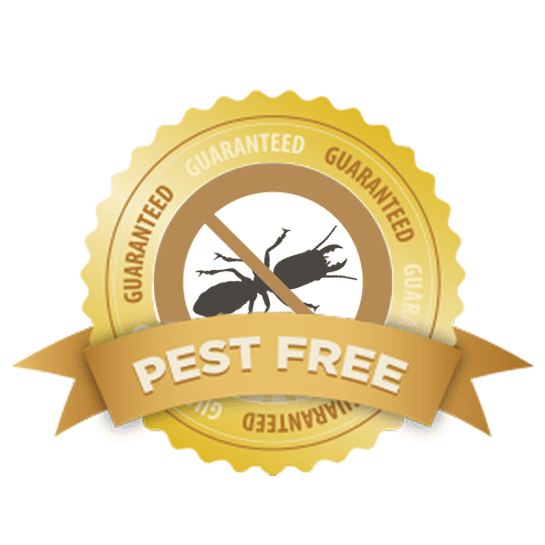Trustworthy A1 Bed Bug Exterminator Charlotte - Remove Bed Bugs Rapid
Trustworthy A1 Bed Bug Exterminator Charlotte - Remove Bed Bugs Rapid
Blog Article
Bed Bug Therapy Malfunction: Contrasting Chemical Vs. Non-Chemical Solutions
In the world of bug control, specifically when handling the relentless issue of bed pests, the choice in between chemical and non-chemical treatment services can be a crucial one. Both methods supply distinct advantages and disadvantages, affecting variables such as performance, security considerations, and general expense. By examining the nuanced information of each method, a clearer understanding of which path to pursue in dealing with a bed pest invasion can be acquired.
Performance of Chemical Therapies
Chemical treatments for bed bug invasions have been commonly acknowledged for their potent and quick effectiveness in eliminating these parasites. When thinking about the efficiency of chemical treatments, it is important to comprehend that they can give a fast and detailed option to a bed bug issue.
Furthermore, chemical therapies have the benefit of offering recurring results, indicating that they can remain to remove bed bugs also after the initial application. This recurring action is specifically useful in combating any prospective re-infestations. In addition, the fast activity of chemical treatments can bring alleviation to people encountering severe bed insect invasions, allowing them to gain back control of their home rapidly.
Security Worry About Chemical Solutions
One crucial aspect that requires mindful consideration when making use of chemical options for bed pest therapy is making sure the safety of owners and the environment. While chemical therapies can be effective in getting rid of bed insects, they may posture risks otherwise dealt with properly. Among the key security interest in chemical solutions is the prospective harm they can create to human wellness. Direct exposure to particular chemicals used in bed pest treatments can bring about respiratory issues, skin inflammation, or various other unfavorable responses, particularly in people with pre-existing problems or sensitivities. Additionally, improper application or dose of chemical pesticides can cause harmful deposits lingering in the treated location, posing long-term wellness dangers to occupants.
Moreover, the environmental effect of chemical options is another substantial consideration. Some pesticides made use of in bed insect therapies may be unsafe to useful pests, wildlife, and communities if they seep right into the dirt or water supply. It is necessary to utilize chemical treatments deliberately, complying with safety guidelines, and taking into consideration much less toxic alternatives to minimize these risks and guarantee the effective and risk-free administration of bed insect problems.
Advantages of Non-Chemical Methods
Considering the possible safety and security concerns and environmental impact connected with chemical services for bed pest therapy, checking out non-chemical strategies provides an appealing choice with a number of distinct advantages. Non-chemical therapies are ecologically friendly, as they do not add to air or water pollution, making them a lasting selection for bug control.
In addition, non-chemical services can be effective in targeting bed insects, consisting of hard-to-reach locations where chemical therapies might not pass through - A1 charlotte bed bug exterminator. Techniques such as heat treatment, vacuuming, vapor cleaning, and bed mattress coverings supply complete elimination Website without the use of damaging chemicals.
Limitations of Non-Chemical Treatments

Furthermore, non-chemical treatments usually call for several applications to accomplish successful eradication. This can be time-consuming and may not always ensure full elimination of all bed insects and their eggs, specifically in surprise or hard-to-reach locations.
Furthermore, the success of non-chemical therapies heavily depends on proper application and thoroughness, which can be testing for individuals without expert knowledge. Insufficient application of non-chemical techniques might lead to insufficient removal, causing relentless invasions and the demand for extra treatments.
Therefore, while you could try this out non-chemical treatments have their advantages, it is important to acknowledge these constraints and consider them when determining the most reliable strategy for managing bed pest problems.
Cost Contrast: Chemical Vs. Non-Chemical Options
Provided the restrictions connected with non-chemical therapies, a vital element to examine in the context of bed insect monitoring is the expense comparison between chemical and non-chemical alternatives. In contrast, non-chemical therapies like warm therapy or steam can be a lot more expensive, with costs varying from $1,000 to $6,000 for an entire home. While the preliminary price of chemical therapies may seem reduced, multiple treatments might be called for to fully eliminate the problem, possibly increasing the overall cost.
Final Thought

Considering the prospective safety and security worries and environmental effect connected with chemical services for bed insect treatment, exploring non-chemical methods provides an encouraging alternative with several unique advantages.Offered the restrictions linked with non-chemical therapies, a vital element to review in the context of bed insect monitoring is the cost contrast in between chemical and non-chemical options. In comparison, non-chemical therapies like heat therapy or steam can be much more expensive, with expenses varying from $1,000 to $6,000 for a whole home. While the first price of chemical therapies might appear reduced, multiple treatments might be called for to totally get rid of the infestation, potentially increasing the overall price.In verdict, when comparing chemical and non-chemical bed insect treatment options, it is important to consider effectiveness, security, benefits, limitations, and expense.
Report this page